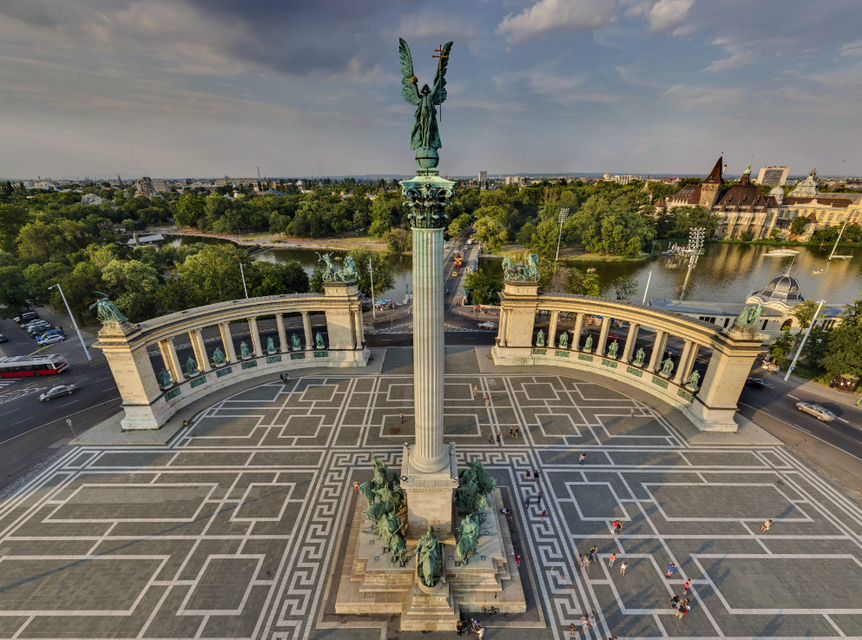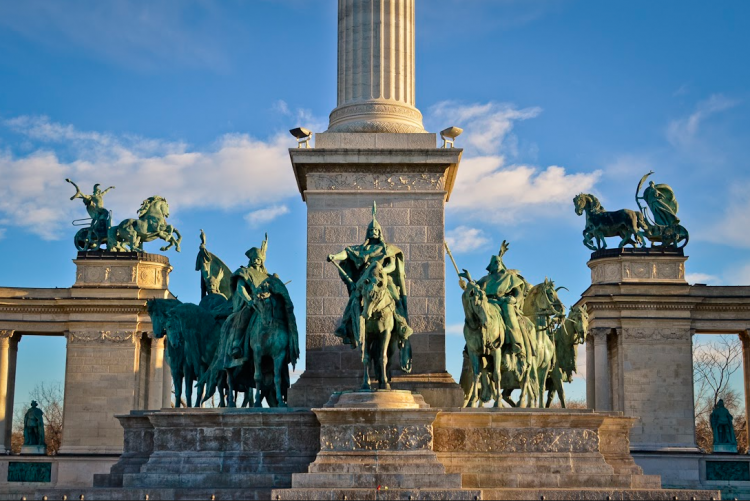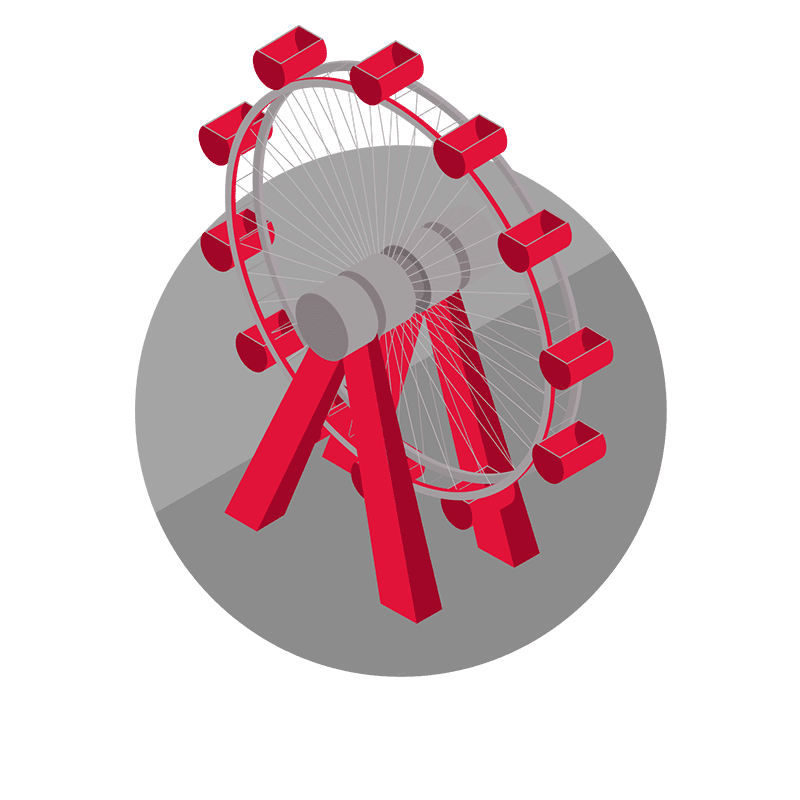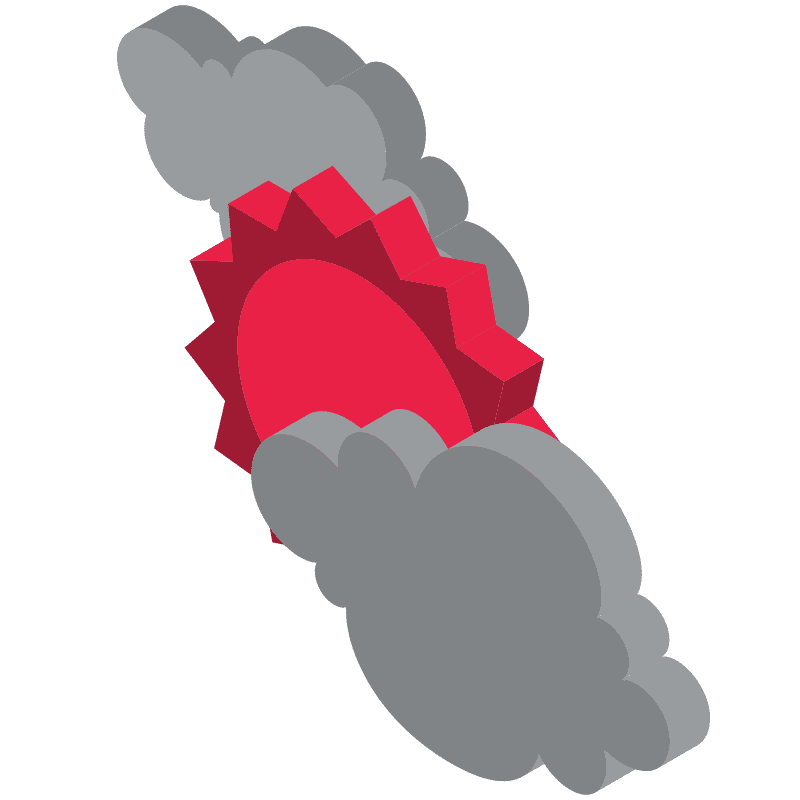
Heroes’ Square: A Pinnacle of National Identity and Historic Significance
Heroes’ Square, located at the end of Andrássy út in Budapest’s VI. district, stands as a tribute to Hungary’s national identity. This iconic landmark is a vast open plaza, adorned with a 40-meter-high column crowned by the Gabriel Archangel’s statue, overlooking the square. The square is easily accessible via the M1 (yellow) metro line, with the Hősök tere station conveniently located nearby.

Photo – 24.hu
At the heart of Heroes’ Square is the Millennium Monument, a symbol of Hungary’s rich history and cultural heritage. Constructed for the 1896 Millennium celebrations, it commemorates Hungary’s 1000th anniversary since its ancestors settled in the Carpathian Basin. The monument’s various elements symbolize pivotal events in Hungary’s history, offering a profound homage to the nation’s roots.

Photo – Kirándulás a történelembe
The Gabriel Archangel’s Column, a central feature of the monument, won the first prize at the 1900 World Exhibition in Paris. Its completion in 1929 marked the naming of the square. Since 2002, Heroes’ Square and Andrássy Avenue have been honored as UNESCO World Heritage sites.
Dominating the square is a Corinthian column rising 36 meters high, with Archangel Gabriel atop it, holding St. Stephen’s Crown. According to legend, Gabriel appeared to St. Stephen in a dream, offering him the crown of Hungary. Pope Sylvester II later sent the Holy Crown to St. Stephen, recognizing him as a defender of Christendom. Today, the Holy Crown is housed in the Budapest Parliament.

Photo – IEC2020
Encircling the central column are equestrian statues of the seven Magyar tribes’ chieftains, who arrived in the Carpathian Basin around 896 AD. A semicircled colonnade envelops the column, adorned with statues of Hungarian kings and heroes. In front of the column stands the Hungarian War Memorial, a poignant tribute to those who sacrificed their lives for Hungary’s independence. This location is a popular site for wreath-laying ceremonies on national holidays.

Photo – Mandiner
Heroes’ Square has borne witness to pivotal events in Hungary’s history. During the Communist era, choreographed demonstrations were held here on holidays. In 1989, the reburial ceremony of Imre Nagy, leader of the 1956 revolution, took place at the square, marking a crucial moment in Hungary’s journey towards freedom.

Photo – Kirándulás a történelembe
Today, Heroes’ Square remains a vibrant public space, attracting not only tourists but also skateboarding teenagers. Its vicinity boasts additional attractions such as the Museum of Fine Arts, the Hall of Art (Műcsarnok), and the City Park, making it a must-visit destination that seamlessly blends history, culture, and contemporary life.















